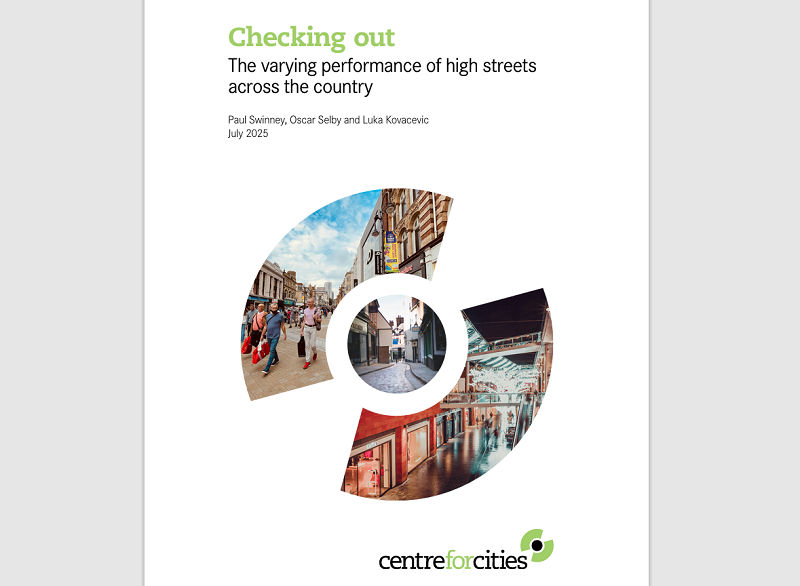A new report from Centre for Cities reveals a striking divide in the state of the UK’s high streets.
City-centre shop vacancy rates are over twice as high in Newport and Bradford as they are in London and Cambridge.
The report, Checking out: The varying performance of high streets across the country, draws on millions of anonymised card transactions and new estimates of local retail vacancy rates in the UK’s 63 largest cities and towns to understand why some high streets thrive and others don’t.

Three key reasons are:
- Low local spending power: Hull and Reading both bring in roughly 400,000 local shoppers, but in Reading incomes are 26 per cent higher and vacancy rates 4 percentage points lower.
- Too much retail space: Newport, Wigan and Middlesbrough – where more than one in seven shops are vacant – all have over twice the amount of retail space per person as Brighton and Liverpool – where the vacancy rate is below 10 per cent.
- Retail spending leakage to bigger cities: Newport and Bradford lose nearly five per cent of high street spending respectively to nearby Cardiff and Leeds, while Birkenhead loses 7.5 per cent to Liverpool.
Those places with strong high streets have risen to the challenge of out-of-town shopping and online retail by pivoting from retail towards food, swapping redundant shops for cafés and restaurants.
In more affluent York and Edinburgh, £1 in every £4 is spent on food. Meanwhile in Bradford, Stoke and Wigan, it is around £1 in every £10. This change reflects the varying performance of the wider local economy: places with large shares of high-paid jobs generate more money to spend on high streets. In poorer areas, the lack of spending power means this shift hasn’t happened.
Centre for Cities says city and town centres with high vacancy rates should be remodelled to tackle an oversupply of retail space.
To turn around struggling high streets, the report recommends that:
- The Government treats city centres as critical parts of the national economy, and allocate £5 billion of its recently announced £113 billion investment to remake city centres with more office space, improved public realm and fewer shops.
- The Government reforms much maligned business rates, but not to save the high street as many claim. The business rates system is flawed, but its reform won’t revive high streets in struggling economies where many properties already pay nothing.
- Cities increase the size of the catchment of their city centres through building more homes in inner-city locations, as opposed to more developments on the edge of town, where there is demand for this type of inner city living.
- Cities should be realistic about visitor strategies. They should prioritise making city centres attractive to residents first; visitor appeal will follow.
Andrew Carter, Chief Executive of Centre for Cities, said: “The high street has long been the bellwether of the local economy. Shuttered-up shops influence people’s opinions about how successful their areas are.
“Our research shows the high street isn’t failing everywhere. Where it is, the cause is not just cosmetic, it is economic. Policies relating to shopfronts, rents or parking miss the bigger picture.
“City centres that struggle are over-supplied with shops and under-supplied with people. If local residents don’t have money to spend or a reason to be in the centre, high streets suffer – no matter what interventions are made.
“It is possible to revive the fortunes of struggling high streets. But it will require local and national governments to start by fixing the economy, and not just focussing on the high street itself.”




















